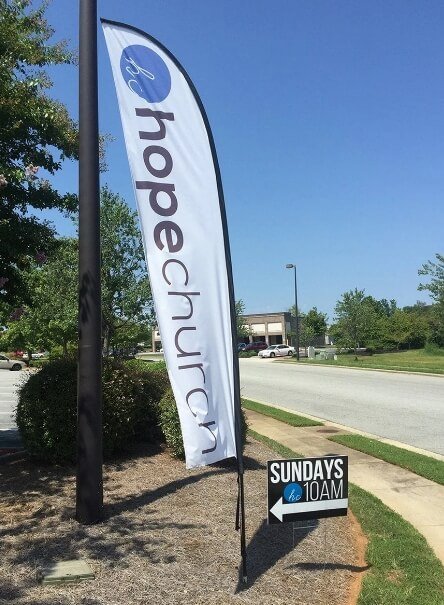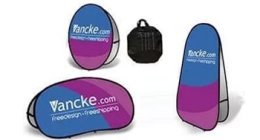
Church feather flags play a crucial role in enhancing visibility and promoting church activities. These flags attract attention and create a welcoming atmosphere for visitors. Regular maintenance ensures the longevity and effectiveness of these promotional tools. Proper care keeps the flags vibrant and functional. This guide provides essential tips for maintaining church feather flags.
Church Feather Flags Cleaning and Care

Choosing the Right Cleaning Materials for Church Feather Flags
Gentle Detergents
Using gentle detergents is essential for maintaining the quality of church feather flags. Harsh chemicals can damage the fabric and cause discoloration. Opt for mild liquid detergents designed for delicate fabrics. These products help preserve the vibrant colors and durability of the flags.
Soft Brushes and Cloths
Soft brushes and cloths are crucial for cleaning feather flags. Avoid using abrasive materials that can tear or fray the fabric. A soft brush helps remove dirt without causing damage. Lightly dab any stains with a soft cloth to keep the flag in good condition.
Cleaning Frequency for Feather Flags
Weekly Cleaning
Regular weekly cleaning helps maintain the appearance of church feather flags. Gently shake off loose dirt and debris. Use a soft brush to remove any remaining particles. This routine keeps the flags looking fresh and eye-catching.
Deep Cleaning Monthly
Deep cleaning monthly is essential for thorough maintenance. Handwash the feather flags with a gentle detergent and cold water. Avoid using washing machines, which can be too harsh. Rinse thoroughly and let the flags air dry. This process ensures the longevity and effectiveness of the flags.
Proper Storage of Church Feather Flags
Storing in a Dry Place
Avoiding Moisture
Moisture can significantly damage church feather flags. A dry storage area prevents mold and mildew growth. Thoroughly dry the flags before storing them. Damp flags can lead to fabric deterioration and color fading.
Using Protective Covers
Protective covers shield feather flags from dust and dirt. Use breathable covers to prevent moisture buildup. These covers keep the flags clean and ready for use. Proper covering also helps maintain the fabric’s integrity.
Folding Techniques for Church Feather Flags
Avoiding Creases
Proper folding techniques help avoid creases in feather flags. Lay the flag flat on a clean surface. Fold the flag gently along its natural lines. Avoid sharp folds that can create permanent creases. Smooth out any wrinkles during the folding process.
Using Storage Bags
Storage bags provide an additional layer of protection for feather flags. Choose bags made from soft, breathable materials. These bags prevent dust accumulation and protect the flag from physical damage. Store the folded flag inside the bag to maintain its shape and quality.
Inspection and Repairs of Feather Flags
Regular Inspections of Church Feather Flags
Checking for Tears and Frays
Regular inspections of church feather flags help identify any tears or frays early. Examine the edges and seams of each flag closely. Look for small rips or worn areas that could worsen over time. Addressing these issues promptly prevents further damage and extends the lifespan of the feather flag.
Inspecting Poles and Bases
Inspecting the poles and bases of feather flags is equally essential. Check for any signs of rust or corrosion on the poles. Ensure that the base remains sturdy and free from cracks. A stable flag pole base keeps the feather flag secure and upright, even in windy conditions. Regular maintenance of these components ensures the overall stability and effectiveness of the banner.
Repair Techniques for Feather Flags
Sewing Small Tears
Sewing small tears in feather flags requires precision and care. Use a needle and thread suitable for the flag’s fabric. Gently stitch along the tear, ensuring that the thread matches the color of the flag. This method effectively repairs minor damage and prevents the tear from expanding. Regularly repairing small tears maintains the flag’s appearance and functionality.
Replacing Damaged Parts
Replacing damaged parts of feather flags includes both the fabric and the hardware. If a tear becomes too large to sew, consider replacing the entire flag. Similarly, replace any damaged poles or bases to ensure the flag remains stable. Using high-quality replacement parts enhances the durability and performance of the feather flag. Following these repair techniques keeps the church feather flags in optimal condition for longer periods.
Weather Considerations for Feather Flags

Handling Extreme Weather
Bringing Flags Indoors During Storms
Bringing feather flags indoors during storms is essential. Strong winds and heavy rain can damage the fabric and poles. Indoor storage protects the flag from harsh weather conditions. This practice extends the lifespan of the banner.
Using Weather-Resistant Materials
Using weather-resistant materials for feather flags ensures durability. Polyester and nylon are ideal choices. These materials withstand rain, wind, and sun exposure. Investing in high-quality materials reduces the need for frequent replacements.
Seasonal Adjustments for Feather Flags
Adjusting for Winter Conditions
Adjusting feather flags for winter conditions is crucial. Cold temperatures and snow can affect the fabric. Use flags made from materials that resist freezing. Ensure the base remains stable on icy surfaces. Regularly check the flag for any signs of wear due to cold weather.
Preparing for Summer Heat
Preparing feather flags for summer heat involves several steps. UV rays can cause fading and fabric deterioration. Use UV-resistant materials to maintain vibrant colors. Ensure the base remains secure in dry and windy conditions. Regularly inspect the flag for any signs of sun damage.
Maintaining church feather flags ensures their longevity and effectiveness. Implementing the provided tips will keep the flags vibrant and functional. Well-maintained flags enhance church visibility and promotion. Regular care attracts attention and creates a welcoming environment. Proper maintenance preserves the quality and appearance of the flags. Investing time in upkeep benefits the church community. High-quality flags reflect the church’s commitment to excellence.











